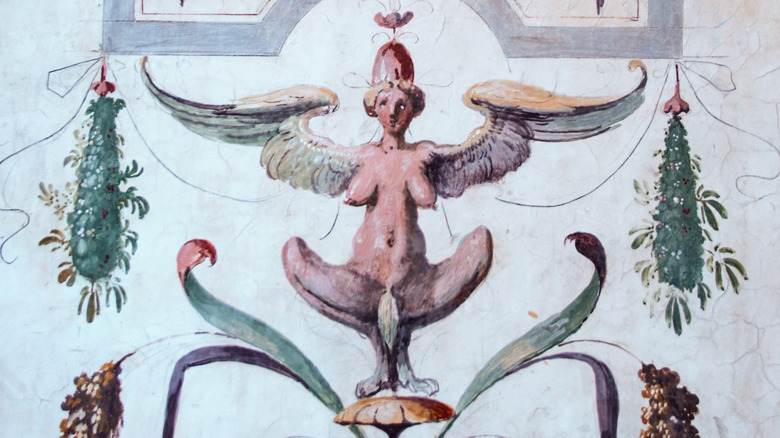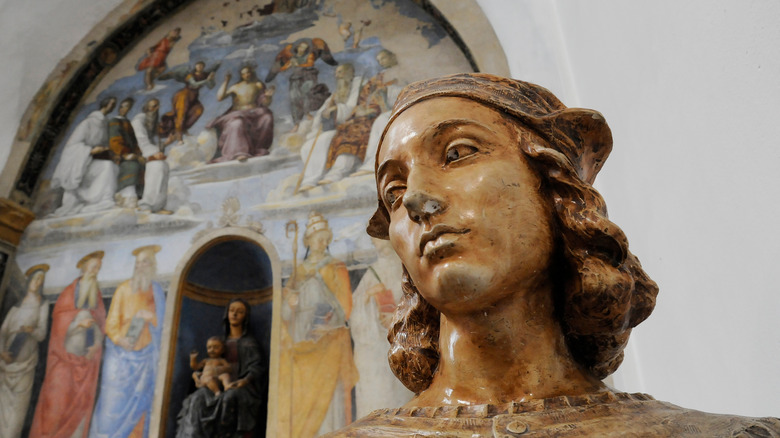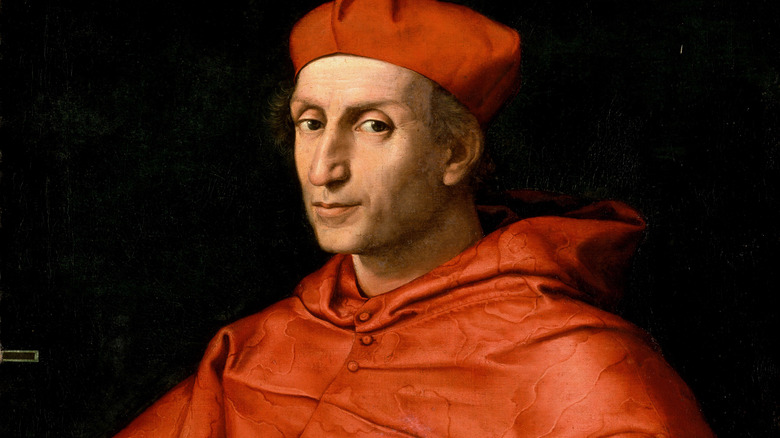The Truth About A Risque Bathroom In The Vatican
We may receive a commission on purchases made from links.
The Vatican Palace, where popes have traditionally lived since the 16th century, holds more secrets than bricks and tiles. Some of these secrets are rather sordid, but others are wondrous and rather charming. There is, for example, a rumor that a small bathroom in the palace was painted with scenes of... a rather unchaste nature (via ABC). Located somewhere in the papal apartments, this pornographic bathroom had no official recognition for years. A few murky photographs circulated in the 1930s, but they were impossible to verify: No one who wanted to know ever had access, and those with access were not about to speak.
It's a delicious little tale. It also happens to be true. Several recent visitors have seen it, including Tony Perrottet, author of "The Sinner's Grand Tour: A Journey Through the Historic Underbelly of Europe." Perrottet cajoled a sympathetic bishop into smuggling him into the papal apartments to sit in this bathroom for five minutes. "I saw Venus naked doing her hair by the lake, her legs akimbo," he told ABC. "I had to get to the monsignor to step aside to see the most famous one — Pan pleasuring himself."
La stufetta del Bibbiena
The bathroom in question is known as "la stufetta del Bibbiena." "Stufetta" is a diminutive of "stufa," which means stove; today it refers to a space heater, but in the 16th century it was used to describe a small heated room (per Treccani).
"Il Bibbiena" was the Cardinal Bernardo Dovizi di Bibbiena, who lived in the late-15th to early-16th centuries. Bibbiena was a humanist and an able politician, rising to fame at the court of the Medici in Florence, as Florida International University explains. No pale, hand-wringing moralizer was he: He fought in Florence's wars with Urbino, wrote plays, and is believed to have been poisoned by his enemies at the age of 50. Bibbiena had once been the tutor of the future Pope Leo X, who relied on the cardinal so heavily for administrative duties that he called him "alter papa," the "other pope." But Bibbiena had another friend at the Vatican who would bring him fame: the painter Raphael.
The Vatican was the greatest patron of art in the world at this time. Julius II had commissioned the Sistine Chapel frescoes from Michelangelo, and Raphael was decorating the papal apartments with a series of frescoes, including the "School of Athens," a celebration of Renaissance humanism. It was probably during this time that Bibbiena asked his talented young friend for some art of a different, more intensely pagan nature (as "Visual Cultures of Secrecy in Modern Europe" implies.)
A renaissance man
That's Raphael's own portrait of Bibbiena above, now at the Uffizi. You see right away what kind of man he was: intelligent, ambitious, without illusions about human nature. What the portrait does not show is Bibbiena's cultural sensitivity. You wouldn't guess that he was a playwright, for example, although he was. His most famous comedy, "La Calandria," is a sex comedy inspired — like the Pans and Venuses of his bathroom — by the erotic imagination of the Roman poet Ovid. "La Calandria" is daring. Formally it's an elegant commedia dell'arte, a bit like Shakespeare's "Twelfth Night." Like "Twelfth Night," it involves crossdressing and elaborate fantasies of androgyny, as Valeria Finucci of Duke University explains in "The Manly Masquerade."
Only in the Renaissance could a Catholic priest publish a play like "La Calandria" with impunity. Bibbiena was a humanist, part of the Renaissance movement that embraced the clarity and dignity of the ancient world, and tried to bend it to the Catholic faith (per ThoughtCo). Poets like Ovid, who wrote beautiful pastorals about sexual transformation (via Britannica), became a part of a normal education. Educated men across Europe grew up unscandalized by sex, homosexuality, and man's bestial nature. Bibbiena's "stufetta" was an emblem of that high point in our history. The secrecy around it points to our decline.


